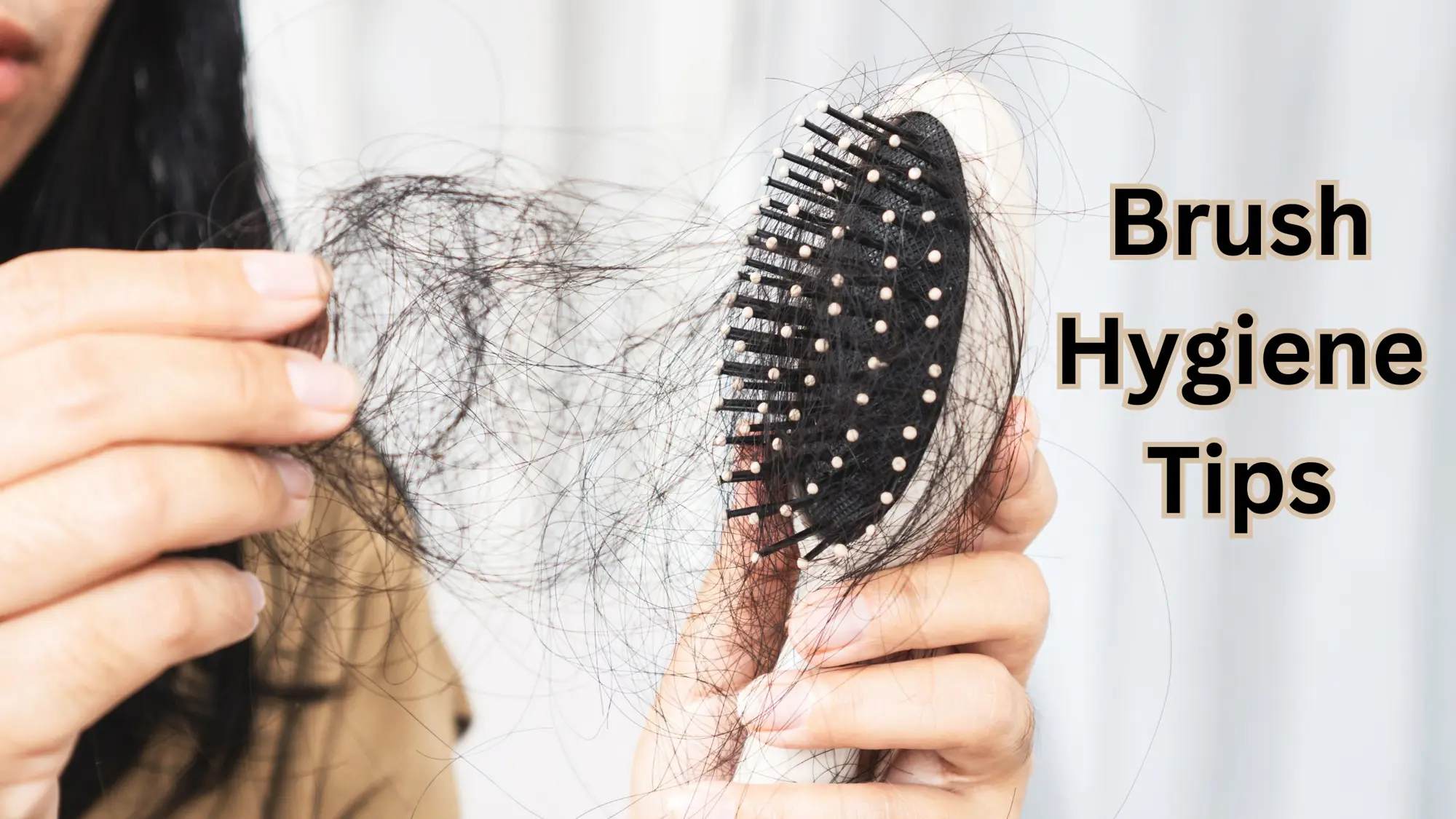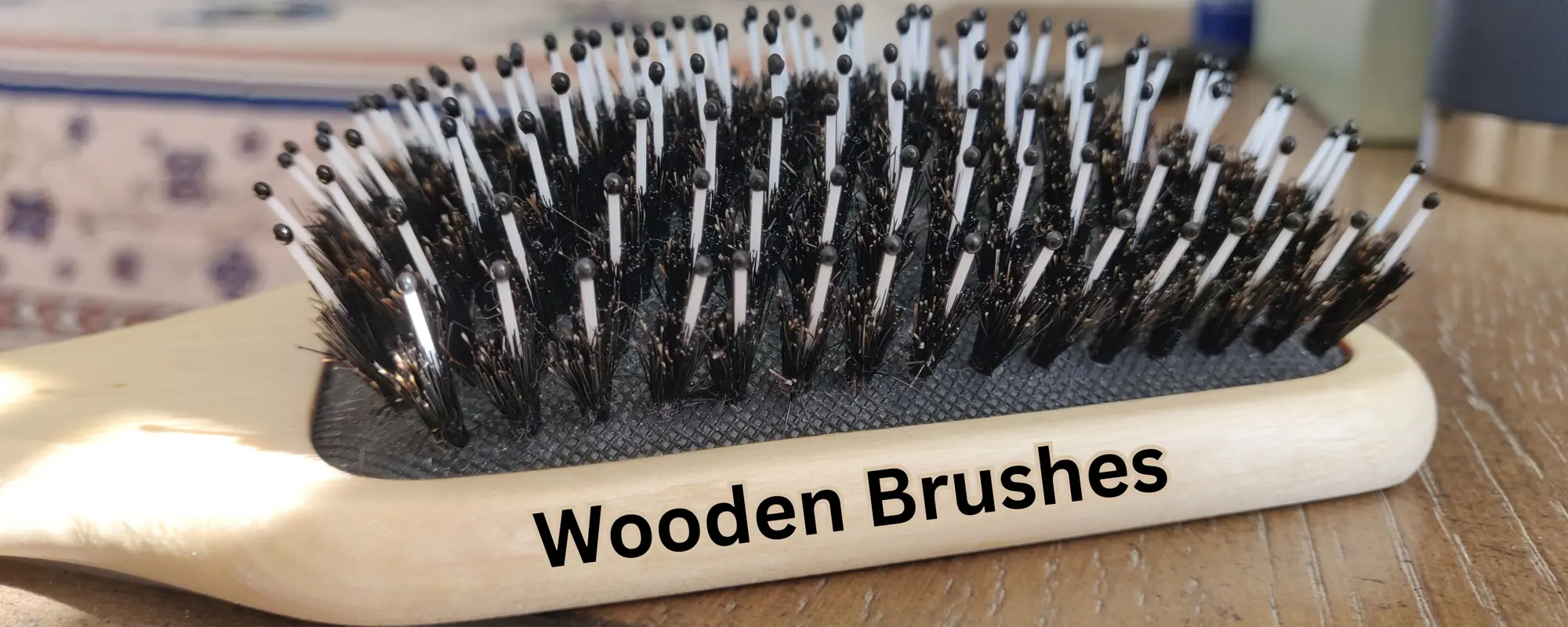Did You Know You Need to Wash Your Hair Brushes?
When was the last time you cleaned your hairbrush? And we're talking more than just removing the hair. If you're like most people, it might have been a while—or maybe never. But did you know that your hairbrush can accumulate more than just loose hair? It can also gather oil, dirt, dust, and even bacteria over time. That's why it's crucial to wash your hairbrush regularly, not just for hygiene but also for the health of your hair and scalp.

Why Washing Your Hairbrush Matters
Your hairbrush is like a sponge; it absorbs everything from your hair and scalp. Every time you brush, you transfer natural oils, leftover hair products, and environmental pollutants onto the bristles. Over time, this buildup can make your hair look greasy and weighed down. Worse, it can lead to scalp issues like dandruff or irritation.
How Often Should You Wash Your Hairbrush?
Ideally, you should clean your hairbrush every two weeks. However, if you use a lot of styling products or have a very oily scalp, you might want to wash it weekly. Regular cleaning will help ensure that your brush remains effective and that you're not reintroducing old dirt and oil back into your freshly washed hair.
If every two weeks is not ideal for your busy lifestyle, try to aim for at least once a month. That's only 12 washes a year, you can commit to that!

How to Clean Your Hairbrush
-
Remove Hair: Start by removing any an all hair caught in the bristles. You can use your fingers, a comb, or even a toothpick to do this. If you have the patience, take a moment to remove any visible debris around the bristles as well. This step is essential and can be done now or later in the process.
-
Soak in Warm Soapy Water: Fill a bowl with warm water and add a few drops of gentle shampoo or dish soap. Swirl the brush around to help loosen the buildup.
-
Scrub: Use an old toothbrush to gently scrub between the bristles. Focus on areas with visible residue to help dislodge any remaining buildup. This thorough scrubbing will ensure that all traces of oil, dirt, and product are effectively cleaned.
-
Rinse and Dry: Rinse the brush thoroughly with clean hot water and let it air dry bristle-side down on a towel.
But what if I have a wooden hairbrush?

How to Properly Clean Wooden Brushes
Wooden hairbrushes require special care to maintain their condition and extend their lifespan. Unlike plastic or metal brushes, wooden brushes can be sensitive to excessive moisture, so follow these steps to clean them properly:
-
Remove Hair: Start by removing any hair caught in the bristles using your fingers, a comb, or a toothpick. If there's visible debris around the bristles, gently clear it away as well.
-
Clean with a Damp Cloth: Moisten a soft cloth or sponge with warm, soapy water (use a gentle shampoo or mild soap). Avoid soaking the brush, as excessive moisture can damage the wood.
-
Wipe Down the Brush: Gently wipe the bristles and handle with the damp cloth, paying attention to any areas with buildup. Be cautious not to let water seep into the wooden base, as this can cause warping or cracking.
-
Rinse Carefully: If necessary, you can lightly rinse the bristles under lukewarm water. However, make sure not to submerge the brush or let water get into the wooden parts.
-
Dry Thoroughly: Pat the brush dry with a towel and let it air dry completely, bristle-side down. Ensure it's fully dry before storing it to prevent moisture damage.
By following these steps, you can keep your wooden hairbrush clean and in great shape, preserving its natural beauty and effectiveness.
The Benefits of a Clean Hairbrush
Regularly cleaning your hairbrush can make a noticeable difference in your hair's appearance and health. Your hair will look fresher, less greasy, and more voluminous. A clean brush ensures you're not reapplying dirt and bacteria to your hair. Plus, your scalp will thank you for the extra care, reducing the risk of irritation and promoting a healthier environment for hair growth.
So, the next time you’re indulging in your self-care routine or find yourself with a bit of free time, don’t overlook your hairbrush. A little maintenance can go a long way in keeping your locks looking their best!